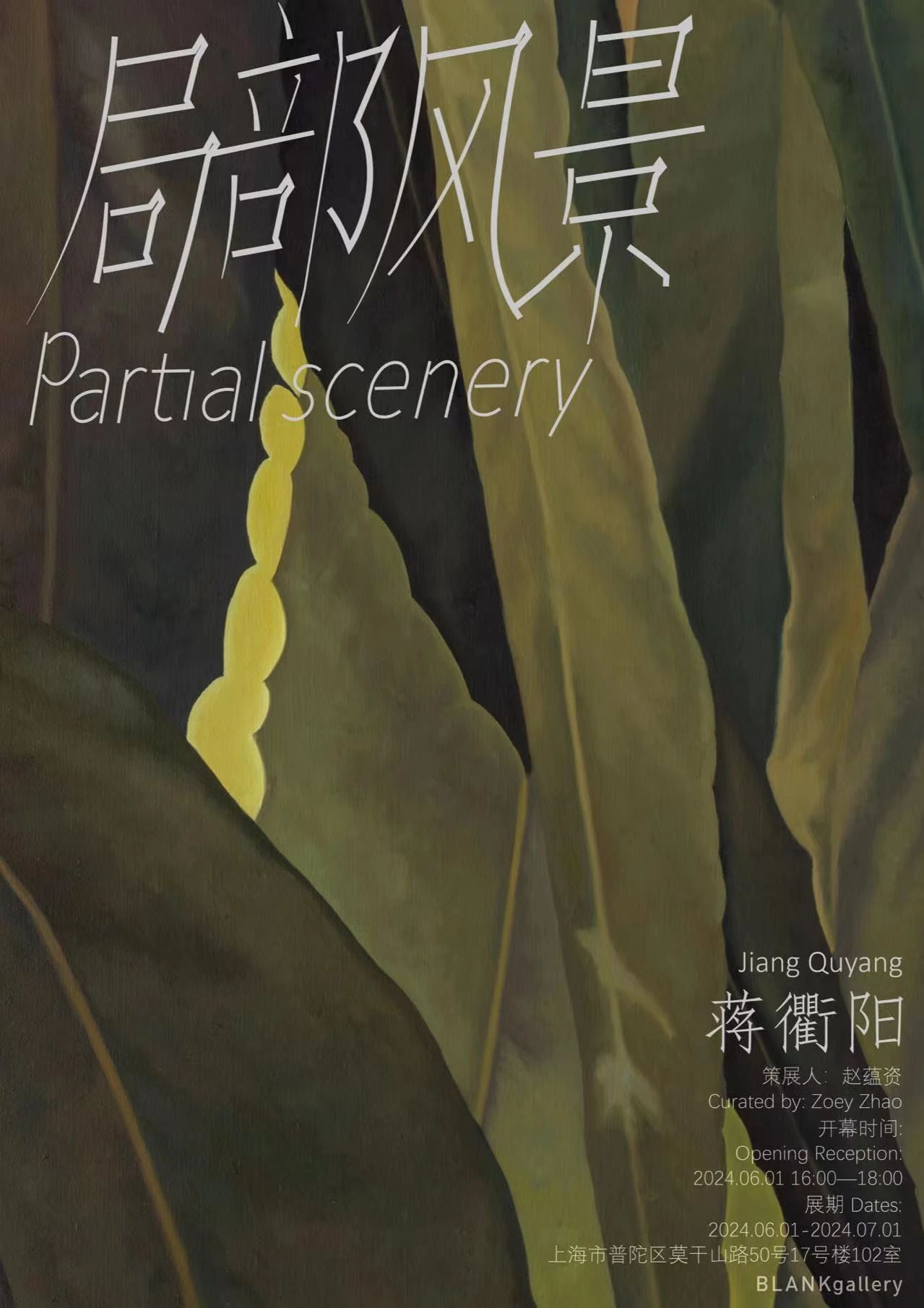展期 Period:
2024.6.1—2024.7.1
艺术家 Artist:
策展人 Curator:
赵蕴资 Zoey Zhao
地点 Venue:
BLANKgallery(上海)
前言 Introduction:
BLANKgallery上海空间欣然呈现签约艺术家蒋衢阳与画廊的第二次个人展览。展览将汇聚23-24年创作的全新作品,于6月1日开幕并持续至7月1日。
蒋衢阳作品继续围绕柳叶的形态作为主体,展开创作由柳叶不同成景中的情韵与思绪。新作品中,蒋衢阳破除了自然认知中的柳叶形态,模糊主体的概念,将对物的具体观看着重于其形的景观,视觉上由远及近,从演绎自然的创作到传达更加抽象的体验,画面不断陶冶,形成全新的观看角度。
柳叶在光影间互相搭垂,姿态在自然生长中增添了更错综的形态——来自于艺术家在创作方式的变化——在现实的基础上有意去自然化,营造更深化的视觉。形态间,柳叶似乎有指向性地向深处探去,有些不再如自然中低垂的形态,而是呈相反更有力地在彼此间交错生长,这样的安排让绘画主体更加被赋予艺术家的主观,于之前的创作少了惬意,多了生命力。
在新系列绘画的整个画面中,观众的目光不再是放在单一风景或者光影上,而是在错 综之间拥有不同的注目点,整体作品向更加抽象化的世界中转去。这种抽象也在于画 面中艺术家所搭建的呼之欲出,似物影,似身型的隐约景象,虚实景象最终还是归为 植物本身。色彩在这批绘画中运用更加丰富细腻,让人无法辨别景观具体发生在哪个 时刻,而是从视觉交给观众去链接。柳叶在这批绘画中既是主体又让人感觉并非如此 简易单薄,而更多的想要拨开柳半遮半掩盖的风景,向后向里一探究竟。这种在感觉 上的留白和作品丰富的层次展现出蒋衢阳新作品的潜力和方向,现实空间于非现实的 交替传递形成了更加当代的艺术语言。
BLANKgallery Shanghai Space is pleased to present artist Jiang Quyang’s second solo exhibition with the gallery. The exhibition, featuring brand-new works created in 2023-24, opens on June 1st and runs to July 1st.
Jiang Quyang continues to focus on the shape of willow leaves as the central subject of his work, evolving his creations to explore emotions and thoughts in various scenes formed by the willow leaves. In the latest works, Jiang Quyang moves beyond the natural apperance of willow leaves, blurring the concept of the subject. Rather than emphasizing the specific viewing of objects he then focus more on creates a scenery on canvas, visually transitioning from distant to near perspectives. From natural interpretations to convey more abstract experiences, ultimately cultivating a new viewing perspective. The willow leaves overlap in light and shadow, their gestures adding intricate shapes to the natural growth. This complexity arises from the artist's evolving creative methods, deliberately altering reality to create a deeper vision. The willow leaves seem to delve into greater depths, no longer resembling their low-hanging natural forms but appearing more vital and intertwined. This arrangement imbues the subject of the painting with more vitality and subjectivity, creating a less comfortable but more dynamic presence than previous works.
In this new series of paintings, viewers' attention is no longer drawn to a single scene or play of light and shadow. Instead, their focus shifts among various intricate points, leading to a more abstract interpretation of the work. This abstraction is also evident in the vague layer Jiang Quyang constructs over some of the paintings, resembling the shadow of an object or the outline of a human presence. Whether virtual or real, these scenes ultimately reference back to the plant itself. The use of color in this series is richer and more delicate, making it difficult to pinpoint the specific moment the scenery depicts, thus engaging the viewer in a visual connection.
While willow leaves remain the main subject but giving more meanings to the subject, they evoke a sense of depth and complexity, inviting viewers to peel back the layers and explore beyond the surface. This interplay of blank space and rich layers showcases the potential and direction of Jiang Quyang's new works, forming a contemporary artistic language through the alternating depiction of real and unreal realms.

